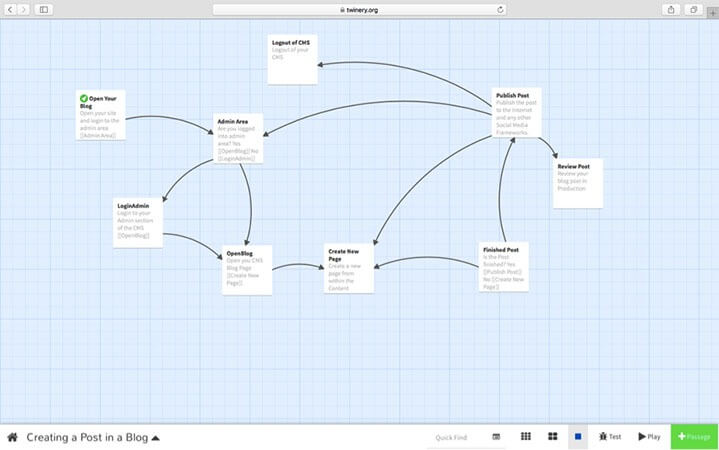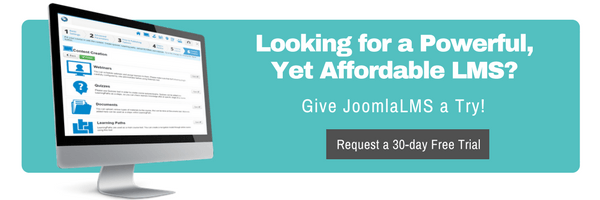When it comes to creating eLearning courses, there are two hot topics that never go out of style in the eLearning circles. The first one is “How to create a qualitative and engaging eLearning course?” and the second one is how to do so on a tight eLearning budget.
Why?
Because the two of them determine the success of your eLearning business in the long run: whether you will have a steady stream of customers waiting to get enrolled in your courses and whether the funding is used wisely.
When it comes to creating eLearning courses, there are two hot topics that never go out of style in the eLearning circles. The first one is “How to create a qualitative and engaging eLearning course?” and the second one is how to do so on a tight eLearning budget.
Why?
Because the two of them determine the success of your eLearning business in the long run: whether you will have a steady stream of customers waiting to get enrolled in your eLearning courses and whether the funding is used wisely.
We have already written about the main principles of effective e-course creation (in case you’ve missed it please read the post The Secret of an Effective Course Creation), now it is time to find out how to create such a course when the budget is constrained.
We asked top learning designers to share the insights on how to design an eLearning course with limited resources. An interesting fact that nobody told us that it was impossible or the course would be tiresome and plain then, moreover, there turned out to be many ways to save money when creating an eLearning course, therewith making it engaging, interactive and well-designed.
Want to know the secrets? Keep reading…
Julian Davis, an experienced Instructional Designer, and Technologist

Lesson #1:
To Create an ELearning Course on a Tight Budget Create a Storyboard
We’ve all completed some form of online learning at some point in our careers or education lives. Have you ever stopped and thought about how the courses are designed?
In the past, there seems to have been an attitude that ‘If it’s in a book, we’ll just convert this to the web - easy!’.
If only it were so easy! The development of an online course crosses many disciplines and will always take a lot of planning. So where would YOU start?
Let’s say you have a course delivered in a traditional Face-to-Face manner that needs to be converted to an online course. As a part of the design phase of the ADDIE approach, you will need to create a storyboard. This is a rough overview of how the course will flow, what will be displayed and where any assessments may fit in.
There are many paid options to create a storyboard, but in reality, you don’t need expensive software to achieve the same outcome. Yes, expensive software has all the bells and whistles, but you can achieve all you need to…for free.
There are 2 pieces of software I want to mention. One is a regular in most office environments these days and that’s Powerpoint ® or Keynote ®. With these simple to use everyday software applications, you can create your online learning course storyboard with links and branches. You also have the added benefit of collaborating with other designers through sharing the files.
Another software application is a web-based application called Twinery. Twinery is a free web application that allows the building of interactive flow charts that can be adopted for storyboarding. A great feature of this is that you can export the flow as an HTML that includes navigation between pages as well as a visual representation of the course.
Below is a representation of how Twinery looks when creating a simple flow of how to add a blog to a Content Management System. In its simplicity, an eLearning course can be planned and viewed before any development is started.

Michael Milroy, a Strategist and a Senior Instructional Designer at Dancor Solutions Inc

Lesson #2
Document the Individuals in the Company Who Must be Involved in the Review Process
Let me tell you a story…
I’ve run my own design business and worked for small, boutique design companies. Over the last 20 years, there is one challenge that I’ve seen destroy budgets repeatedly and wreak havoc on a project’s profitability.
Here’s an instance you can learn from. The small, custom courseware company I worked for won a contract with a major national retailer. The project was to develop an eLearning course to teach new hires about the company during onboarding.
We were excited. This was right in our wheelhouse. We delivered an interactive course that culminated with the end user playing a game similar to Jeopardy. It was a great use of gamification, had opportunities for the end user to answer incorrectly giving artificial competitors a chance to answer correctly and get the points, and was loved by the company’s project manager and the subject matter experts involved in the project and review process. With their feedback, the course was edited and ready for launch about a week early. We were certain we had knocked this project out of the park.
Then we were informed that the project now needed to be reviewed by the owner of the project, the Vice President of the department.
Huddling up with our sales team and project managers, no one was aware that the Vice President was also a stakeholder in this project. But we also realized, we hadn’t asked either. Because we did not know of this additional stakeholder, we were unable to ensure he was a part of the review process. When we were ready to launch, we were confronted with yet another round of revisions, this time with a new reviewer. And we know there never is just one round of reviews with a stakeholder.
It turned out the Vice President hated the course and told everyone to start over. You can imagine the fallout. Trying to get the client to double the price of the project since we felt we had delivered 100% of what we’d been asked to do. Tying up the team that has already been slated to work on new projects.
So my advice to anyone starting up an eLearning business is to document the individuals in the company who must be involved in the review process. Ask questions to make sure you know each and every name, their position and their relationship to the project. Then, make sure you work with the client to clearly spell out who is involved at what point in the review process. If there are key players that can veto project decisions, like the Vice President in my story, fight to include them periodically in the project at key points so the project doesn’t go astray and work (and money) isn’t wasted.
Lesson #3
To Create an ELearning Course on a Tight Budget Repurpose
The best advice I can give is to use stuff that is already made. Yes, you’ll spend money to buy these assets if you haven’t already created them for another customer, but you’ll recoup that money, and more, when you deliver a course that took you substantially less time than developing everything from scratch.
First, find online resources and become familiar with them. ELearning Brothers, Shutterstock, a widget site, music, free sound effects, etc. Spend time on these sites so you are comfortable with what is available. And if you are going to use templates, prebuilt widgets, etc., download a few and try them out. Know where to find and how to use these items BEFORE you start a project. That will save you time, and time is money.
Lesson #4
Build Your Concepts and Proposals Based on the Assets You Have
Start from there. Don’t brainstorm a great solution and then struggle to find the perfect assets. You’ll end up building them from scratch. Start with the assets you have access to – images, prebuilt activities, avatars – and build around them. That will ensure you will be repurposing these assets when you get to development.
Lesson #5
To Create an ELearning Course on a Tight Budget Reuse What You Have Built for Other Clients
Yes, reuse the content you have built for other clients. And when you build something new, be thoughtful. Build it in a way that the client’s branding isn’t heavily woven into the product so it can be easily modified and rebranded for use in another project, or two, or five.
Follow these tips and you would be able to turn a profit even when your client has a tight grip on the wallet.
Jennifer Valley, an Instructional Designer and a Community Manager at Trivantis

Lesson #6
To Create an ELearning Course on a Tight Budget Test the Materials Several Times
My biggest piece of advice would be to test your material not once, twice, or even three times but ten or more when possible. Testing the final draft of your product not only ensures that the developer has thought of all possible outcomes but it saves the time of stakeholders assigned to the review. That, in turn, is money spent correctly as it forces the developer to lower the amount of time a stakeholder may spend on the review which is often supplementary to their position. When in doubt, invest in software like ReviewLink and develop a checklist of all things the developer must check before they can contact the stakeholder.
Gireesh Kumar Sharma, writer, author and blogger at G-Cube

Lesson #7
To Create an ELearning Course on a Tight Budget Reduce Elements & Interactivity
To lower the cost you can reduce the number of engagement and interactivity elements. This will reduce the resources required to build those elements. The fewer items in the course, the less will be the final price. Focus on the engagement via lucid text rather than on costly interactivity and rich graphics. Consider creating your content as a compelling story, which can engage learners.
Lesson #8
To Create an ELearning Course on a Tight Budget Utilize the Team Skills
If you have a team, involve them in the creation of the course; you may even use the learners. More brains will also come up with more ideas and solutions and thus enhance the quality of the content.
Lesson #9
To Create an ELearning Course on a Tight Budget Apply Video-Based Learning
The cheapest way is to shoot a video with the trainer or subject matter expert and learners in a classroom. Create a script where users ask relevant questions to make the video interesting. A scripted or natural discussion on the subject between the subject matter expert and the learners will make the video interesting. Editing the video to include some popular music or song can make it lively and exciting. Now you can deliver this video to your learners via mail, youtube, WhatsApp, etc.
Lesson #10
To Create an ELearning Course on a Tight Budget Use Interactive PowerPoint
The next cheap mode is creating a PowerPoint presentation. Create a PPT of the subject matter, use a great template, and put some flashy graphics here and there. Now use an authoring tool to convert the PPT into an interactive e-learning course.
Lesson #11
To Create an ELearning Course on a Tight Budget Hire a Multi-Skilled Freelancer
If you want better quality than self-made eLearning, you may look for a Freelance eLearning Content Developer to create this for you. They can do a good job at a fair price.
Lesson #12
To Create an ELearning Course on a Tight Budget Outsource ELearning
If you have a little more money to spend, you can outsource it to some startup, which is small but capable enough.
Kristin Anthony, an experienced learning experience designer

Lesson #13 and 14
Be prepared to simplify and to “roll your own” materials
My two best pieces of advice would be to be prepared to simplify and to “roll your own” materials. The two go hand in hand. If your budget is tight, visual and audio assets are usually the first things to go. You can’t afford to spend resources on that cool animation software or the rights to some music or sound effects. Similarly, where you might have simply outsourced asset creation or purchasing, you should be prepared to create it yourself, find and use free tools and creative commons media, or be prepared to cut that idea. By narrowing your scope, simplifying your idea, or creating or finding your own assets, you challenge yourself to build something high quality within constraints. It’s definitely tough but the results can be incredible!
As you see a constrained budget is certainly not a reason to abandon the idea of launching an eLearning business. With the mentioned ideas in mind, you will be able to build engaging and highly informative online courses and allocate the financial resources the right way.
Do you have your own piece of advice on how to create an e-course on a tight budget? Please share in the comments below.
What to read next?
25 Blogs for Someone Who Wants To Become an ELearning Professional
How to Select a Learning Management System?
Top Experts Predict What Will Transform ELearning in 2017






